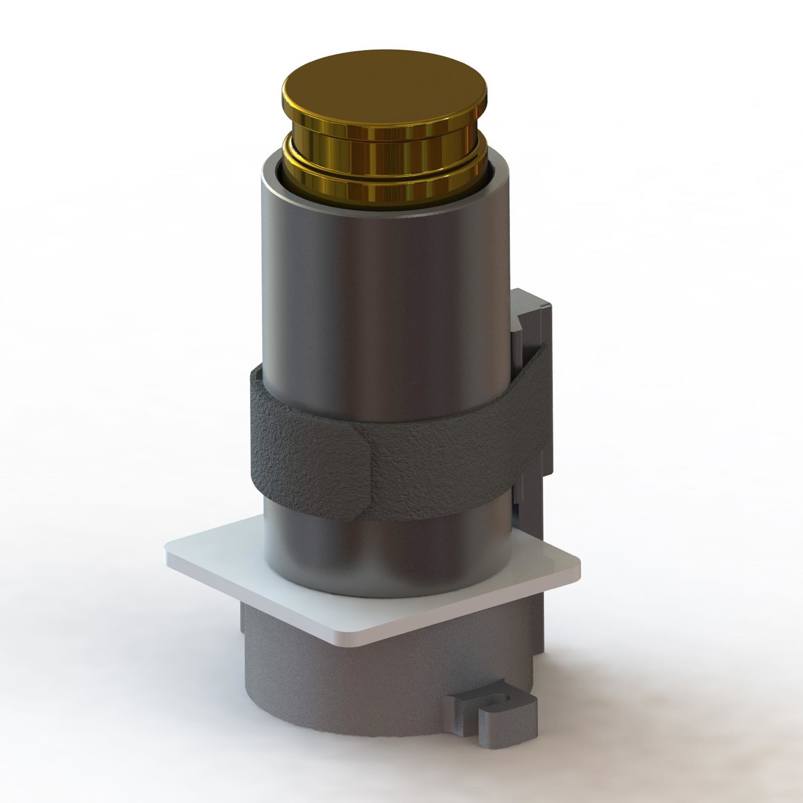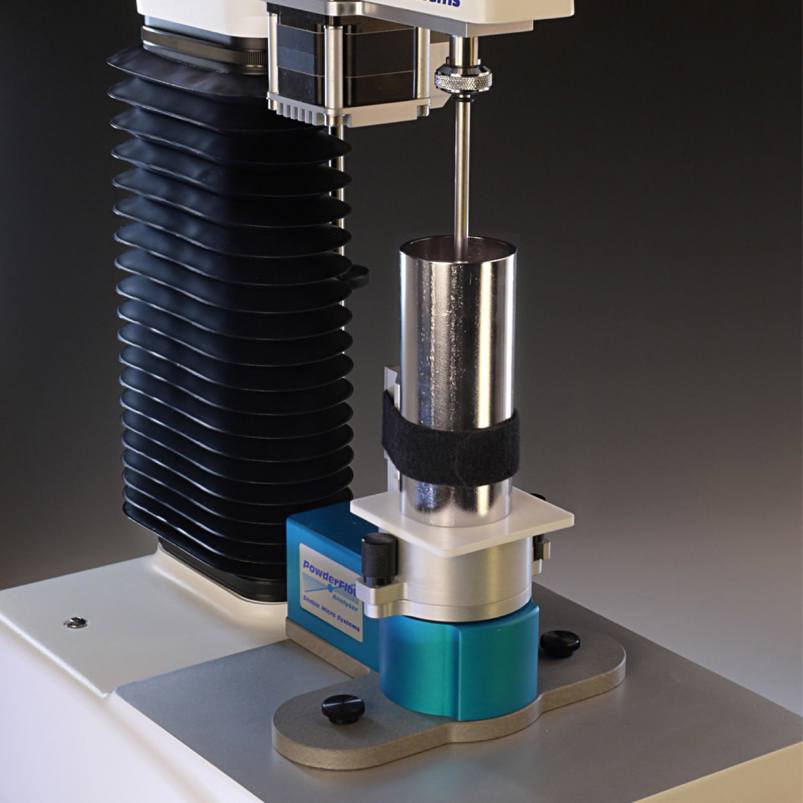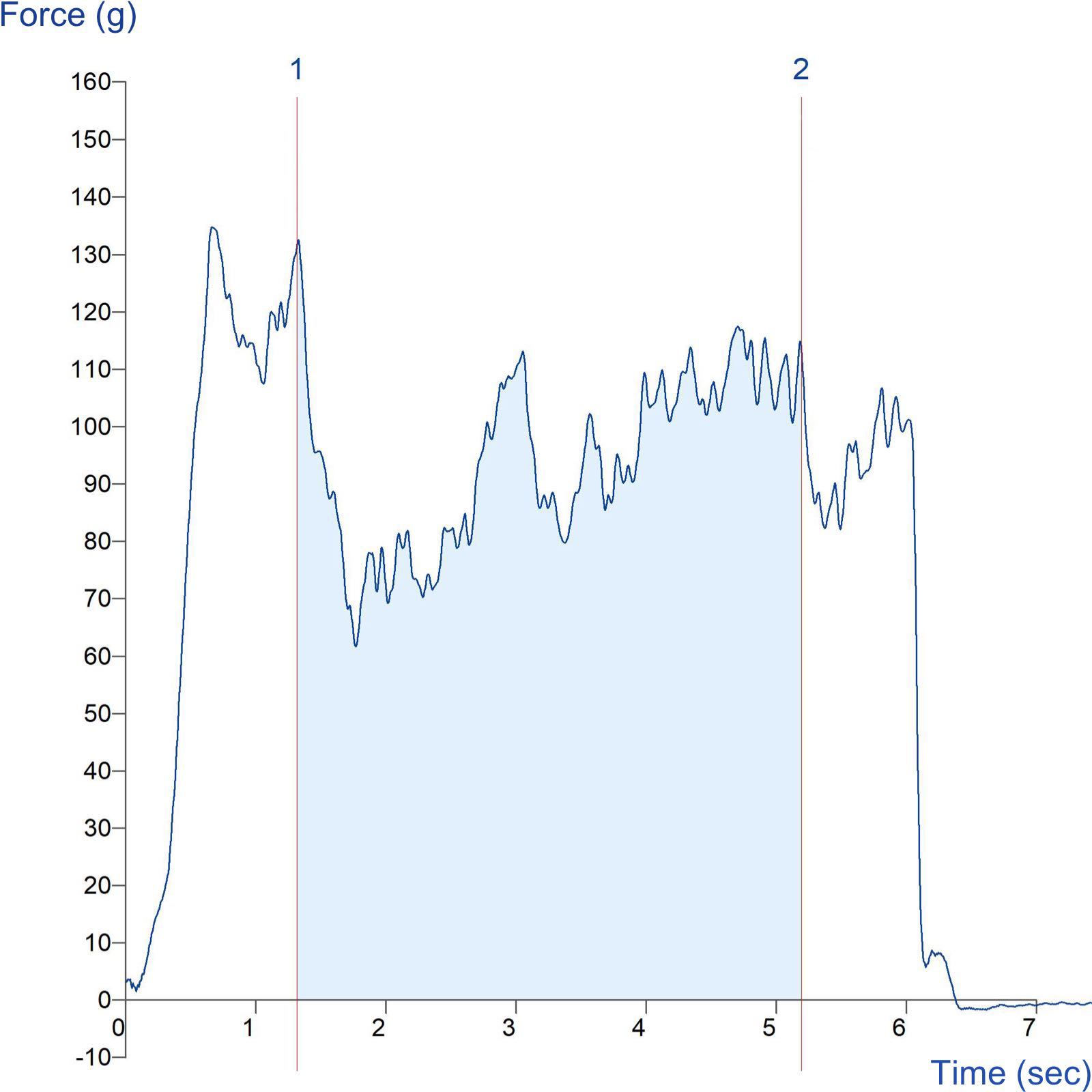Product overview
Caking is the tendency of a powder to form large agglomerates during storage and transportation. The tendency of a powder to cake is closely related to its cohesiveness and generally a powder that is cohesive will also form a definite cake during the caking test. The strength of the cake will depend on a number of factors such as packing efficiency, particle to particle interactions and moisture content i.e. humidity. Understanding the caking properties of a powder are important as most powders will be stored in hoppers or silos, or transported at some point in the production process. A powder that cakes easily and forms a strong cake may not discharge easily from a silo when required.
The sample is prepared by filling a static consolidation tube by approximately 50% (50% of the tube is marked internally as a visual guide). The mass of powder to fill to this volume is noted and then used for all subsequent tests of this material. A compactor, typically 2kg, is introduced into the tube and allowed to rest on the powder column under controlled environmental conditions for a given period of time. The compactor is removed at the end of the consolidation time and the sample is tested. A 46mm diameter Powder Flow Analyser blade moves down through the tube until it reaches a trigger force of 3g. The blade then begins to rotate through the consolidated powder column to a distance of 12mm. On reaching this distance the blade then returns to its starting position.
A tube cap is placed on top of the tube after the compactor is removed to limit the exposure of the sample to the atmosphere prior to testing. The area under the curve in the mid-section of the graph is taken as the work to break the cake. The greater this value the stronger the cake.
Ideal sample form
Granular material that has a tendency to cake.
Benefits and limitations
- Requires a Powder Flow Analyser.
- Allows consolidation to take place aside from the instrument for a chosen period of time prior to assessment of caking.
Optional extras
Additional sample tube, base, cap and compactor sets are available to increase sample throughput and hence increase testing efficiency.
Technical information
Installation
Full installation instructions are provided within the Education Zone of the latest Exponent/Connect software version and on the technical information sheet accompanying this product.
Chemical compatibility
Stable Micro Systems probes and attachments are commonly made from four materials: anodised aluminium (AA6082 T6), stainless steel (316 T), Delrin (acetyl copolymer) and Perspex (polycarbonate).
In general use, probes and attachments made from these materials will be suitable for testing food products and inert non-food materials.
The four materials listed above are not universally resistant to all types of chemicals and as such the compatibility of the probe/attachment material with the product (to be tested) must be established to prevent damage to the probes and attachments. If the compatibility of the product with the probe is unknown to the customer then the chemical information about the product (Material Safety Data Sheet or Product Data Sheet) should be submitted to Stable Micro Systems. Stable Micro Systems will then assess the suitability of the probe/attachment material for use with the product and advise accordingly. If this advice is not sought then Stable Micro Systems will not accept liability for probes/attachments damaged by chemical attack from the product being tested.
Cleaning and maintenance
All probes and attachments may be cleaned in warm (or hand hot) water using a mild detergent. A soft brush may be used but abrasive cleaning aids should be avoided. Stable Micro Systems products should not be microwaved or cleaned in a dishwasher.
Screw threads should be lightly lubricated after drying using a light lubricant, e.g. petroleum jelly, mineral oil. This will aid the fitting and unscrewing of the item. Each component of a probe or attachment should be wrapped separately when stored, to avoid scratching or chipping. This will safeguard against any unnecessary damage to the accessory.



